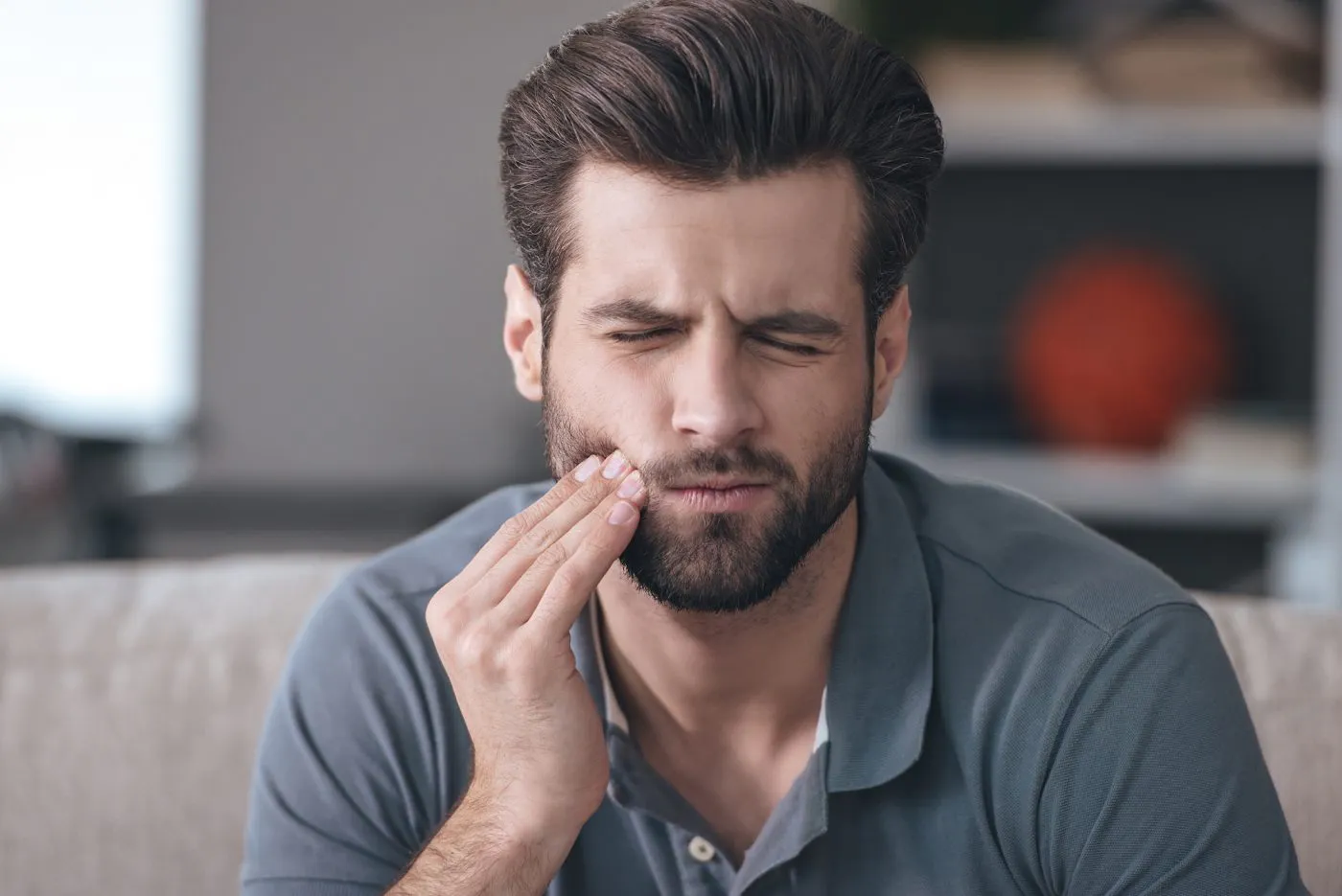What you can do at home
Should you be experiencing irritation from TMD, there are a number of adaptations you can make to make your life more comfortable until the pain subsides.
Try these 5 steps to a more relaxed jaw:
- Take a flannel and run it under a hot tap. Press the hot flannel to your jaw and hold it there. Follow this with a simple massage of the face and jaw.
- Eat soft foods that are easy on this ‘chewing muscle’ and put a stop to chewing gum for the time being.
- Try not to clench or bite down too hard, and similarly avoid stretching the jaw too wide.
- Practice some relaxation techniques, which may help relieve tension held in your jaw.
- Simple jaw exercises can help strengthen the muscle and loosen stiff jaws. Your local Rugby dentist can advise on suitable home exercises.
In practice procedures
Your Jones Dental & Implant Clinic dentist will discuss your concerns and history of TMD. Should you come to us with persistent pain, they may offer you one of a range of options to tackle the problem.
Mouthguards can sometimes be made up specially to fit your mouth, in order to take the pressure away from any biting or grinding. If this is causing the problem, relieving the tension may help diminish the pain.
Painkillers such as ibuprofen, codeine or paracetamol can also help with the immediate pain. Your dentist may prescribe a stronger painkiller depending on your situation, this could be a muscle relaxant or an antidepressant. If arthritis is the culprit, then your dentist may suggest a steroid injection to help to reduce the swelling. In some cases, one injection can solve the problem completely.
Surgery options for TMD
If you have very severe and persistent issues with TMD, you may be referred to an oral or maxillofacial surgeon to discuss wider treatment options.
Arthrocentesis is a procedure which washes out the joint. Small needles containing fluid are inserted directly into the joint and the fluid washes away any debris that may be causing pain.
TENS can treat TMD through the use of an electrical pulse to ‘massage’ the muscles in the face.
Arthroscopy has been known to be as effective as open-joint surgery. It works by inserting a thin tube, called an arthroscope into the joint via a small incision. This tiny tube is filled with fibre optics that provide a camera and light by which the surgeon can operate. They work using small instruments to complete the procedure with minimal invasion.
Open-joint surgery is usually only an option if the problem is structural. This is performed under a general anaesthetic in order to make an incision to expose the jaw joint. From here, a surgeon may reposition or repair an problems with the joint, or remove bony substances. If the joint hinge has been damaged or altered so much as it is permanently hindering movement, the surgeon may need to insert an artificial replacement. As with any surgery, this involves more risks than the other options. This will be discussed in depth with your Jones Dental & Implant Clinic dentist, should it be an option.
If you experience pain in your jaw, contact your Jones Dental & Implant Clinic dentist for an assessment and to discuss available treatment. Make an appointment today with your Rugby dentist.
